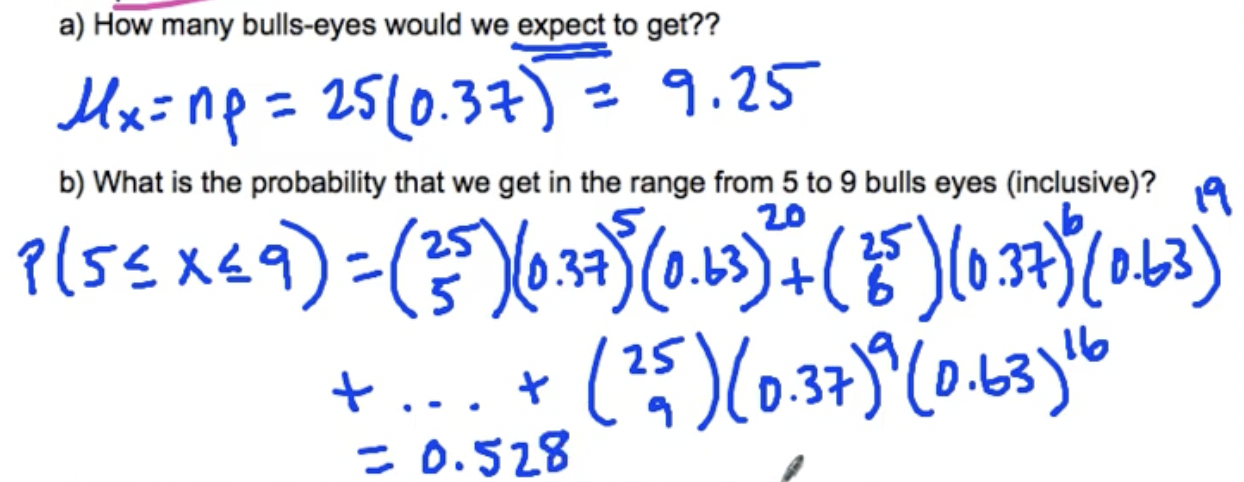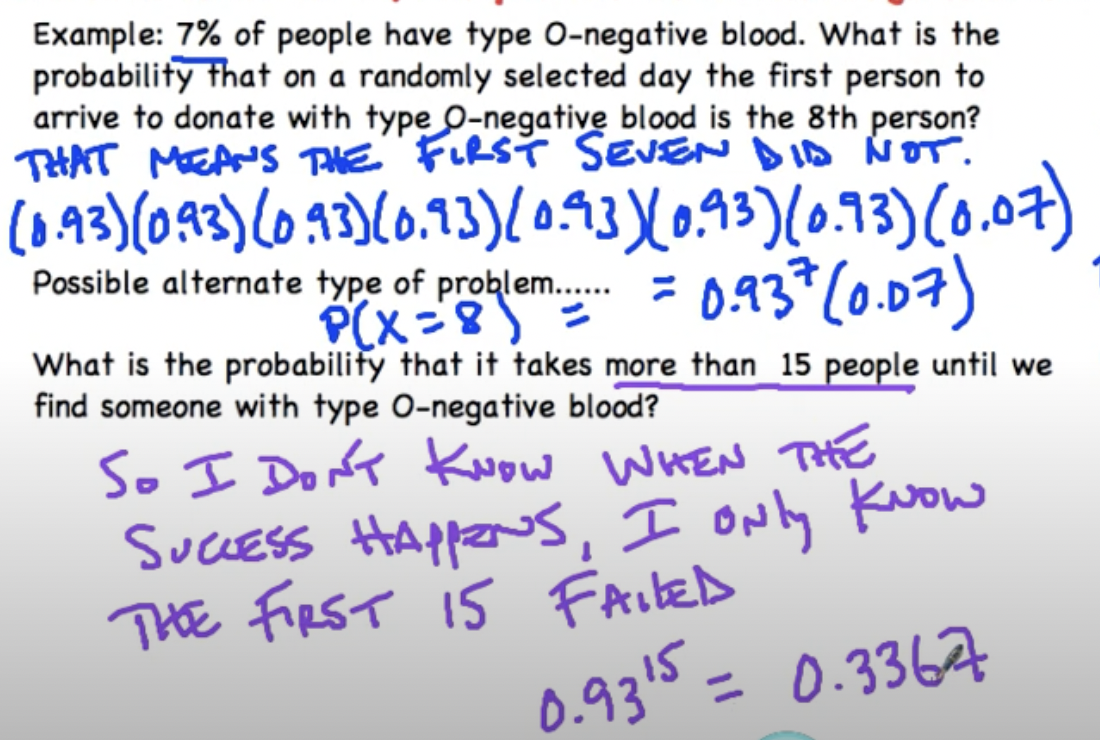
6.2: Binomial and Geometric Probability
Binomial Distributions
A setting is considered binomial if the four following criteria are met
B: Binary
Trials must be able to be categorized as successes or failures
I: Independence
Trials must be independent from one another
N: Number
There must be a fixed number of trials
S: Success
There must be a constant probability of success for each trial (represented by variable p)
Binomial random variables meet all four of these conditions, and are described by binomial distributions
B(n,p) means that there is a binomial distribution where x counts the number of successes
n = number of trials/observations
p = probability of success
x can only take on whole number values from 0 to n
Mean and standard deviation for binomial random variables
µ = np
σ = square root of np(1-p)
Formula for Binomial Predictability

This means that:
Out of n trials, there are k successes
n choose k counts the number of ways to have successes in n trials
p^k calculates the number of times k succeeds
(1-p)^(n-k) calculates the number of failures
Calculator use
Particular success = binomPdf
Eg. P (x=5)
Cumulative success = binomCdf
Eg. P (x<5)
P(1<x<12)
Menu 6→5→D/E
Must show equations + work on paper to reflect what is done on calculator for credit on tests + AP exam
Example
The probability of hitting a bullseye while playing darts is 0.37
We are going to throw 25 darts and count the number of bullseyes.
Each throw is independent.

Geometric Distributions
Meet all of the criteria for binomial probabilities except there is no set number of trials → they are continued until failure
If x is geometric, p is the probability of success, and 1-p is the probability of failure, then:
P(first success on nth trial) = (1-p)^(n-1) x (p)^1
We succeeded once (on the last trial) and failed every time before that
P(success takes more than n trials) = (1-p)^n
We only know we failed this many times
Example

6.2: Binomial and Geometric Probability
Binomial Distributions
A setting is considered binomial if the four following criteria are met
B: Binary
Trials must be able to be categorized as successes or failures
I: Independence
Trials must be independent from one another
N: Number
There must be a fixed number of trials
S: Success
There must be a constant probability of success for each trial (represented by variable p)
Binomial random variables meet all four of these conditions, and are described by binomial distributions
B(n,p) means that there is a binomial distribution where x counts the number of successes
n = number of trials/observations
p = probability of success
x can only take on whole number values from 0 to n
Mean and standard deviation for binomial random variables
µ = np
σ = square root of np(1-p)
Formula for Binomial Predictability

This means that:
Out of n trials, there are k successes
n choose k counts the number of ways to have successes in n trials
p^k calculates the number of times k succeeds
(1-p)^(n-k) calculates the number of failures
Calculator use
Particular success = binomPdf
Eg. P (x=5)
Cumulative success = binomCdf
Eg. P (x<5)
P(1<x<12)
Menu 6→5→D/E
Must show equations + work on paper to reflect what is done on calculator for credit on tests + AP exam
Example
The probability of hitting a bullseye while playing darts is 0.37
We are going to throw 25 darts and count the number of bullseyes.
Each throw is independent.

Geometric Distributions
Meet all of the criteria for binomial probabilities except there is no set number of trials → they are continued until failure
If x is geometric, p is the probability of success, and 1-p is the probability of failure, then:
P(first success on nth trial) = (1-p)^(n-1) x (p)^1
We succeeded once (on the last trial) and failed every time before that
P(success takes more than n trials) = (1-p)^n
We only know we failed this many times
Example

 Knowt
Knowt
